Manual Task Conditions
By default, manual tasks are created for each privacy request that Fides receives. While this may be appropriate for commonly used systems, there may be times when you want to limit the tasks that are created. For example, it is a privacy best practice not to expose the identifying information required to respond to a manual task to a third party if that user is not in the system. Additionally, the vendor may have requirements that you limit the requests sent to them to fulfill so as to not overwhelm their own services or processes.
Overview
If you have a dataset in one of your internal data stores that can be used to identity users who have records in external services, you can create conditions as part of your manual task configuration. When conditions are enabled and a request is submitted, manual tasks are only created when the conditions are satisfied.
Examples
The examples below demonstrate how to create different conditions for manual tasks.
Check for the existence of a user before creating a task
If you keep a record in your internal systems of users that have records in third parties, you can create a condition that checks for the existence of a user before the task is created. In the example below, we can imagine that the Postgres DB is used to track whether or not the user has been created in the Reddit ads platform.
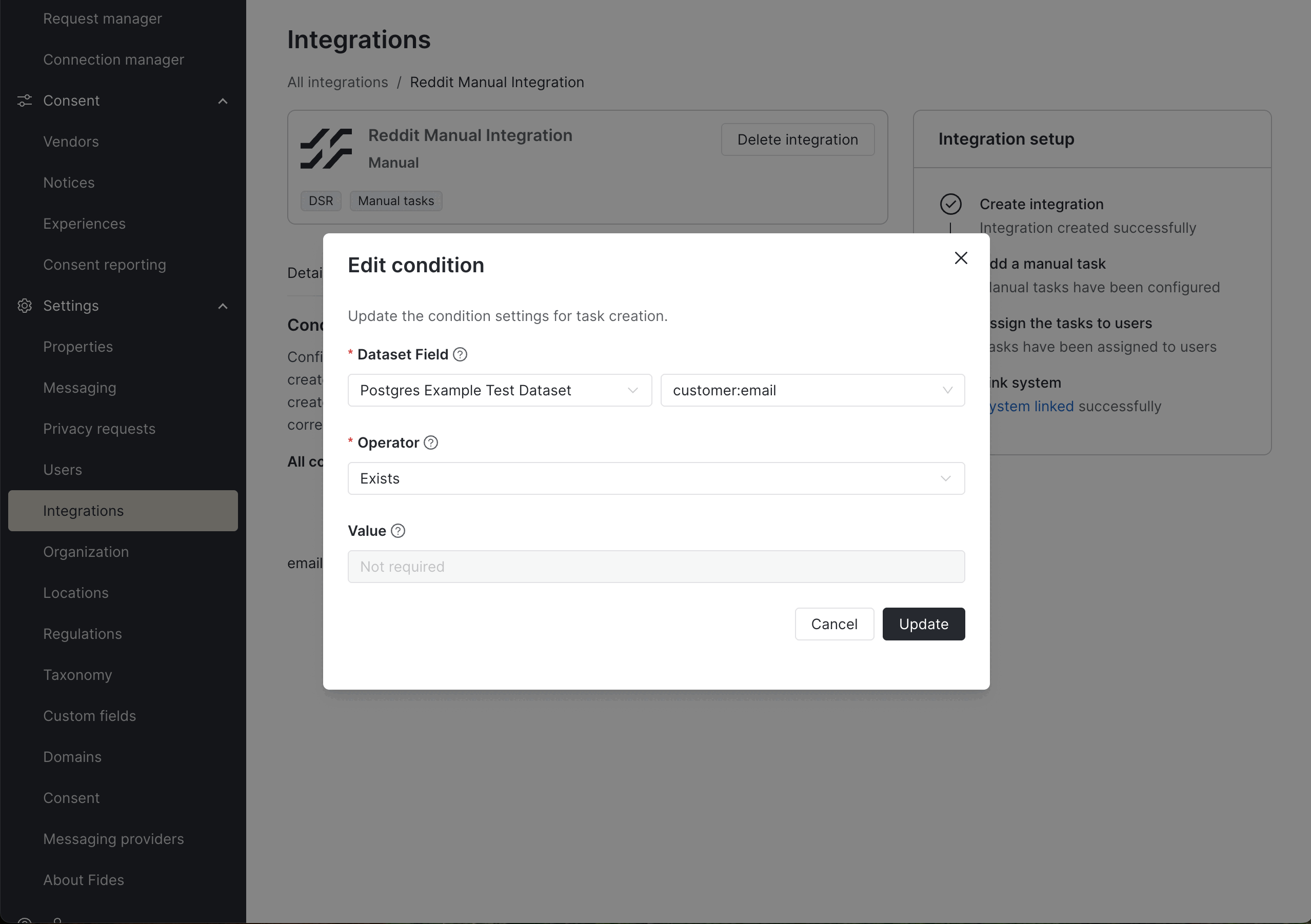
It can be tricky to understand how exactly to configure these conditions. For assistance you can enable the Dataset Testing UI and provide a known identity to inspect the dataset nodes that can be used when configuring the conditions. In the screenshot below, you can see that when an identity is provided that has a value in the Postgres DB, the email node is reachable.
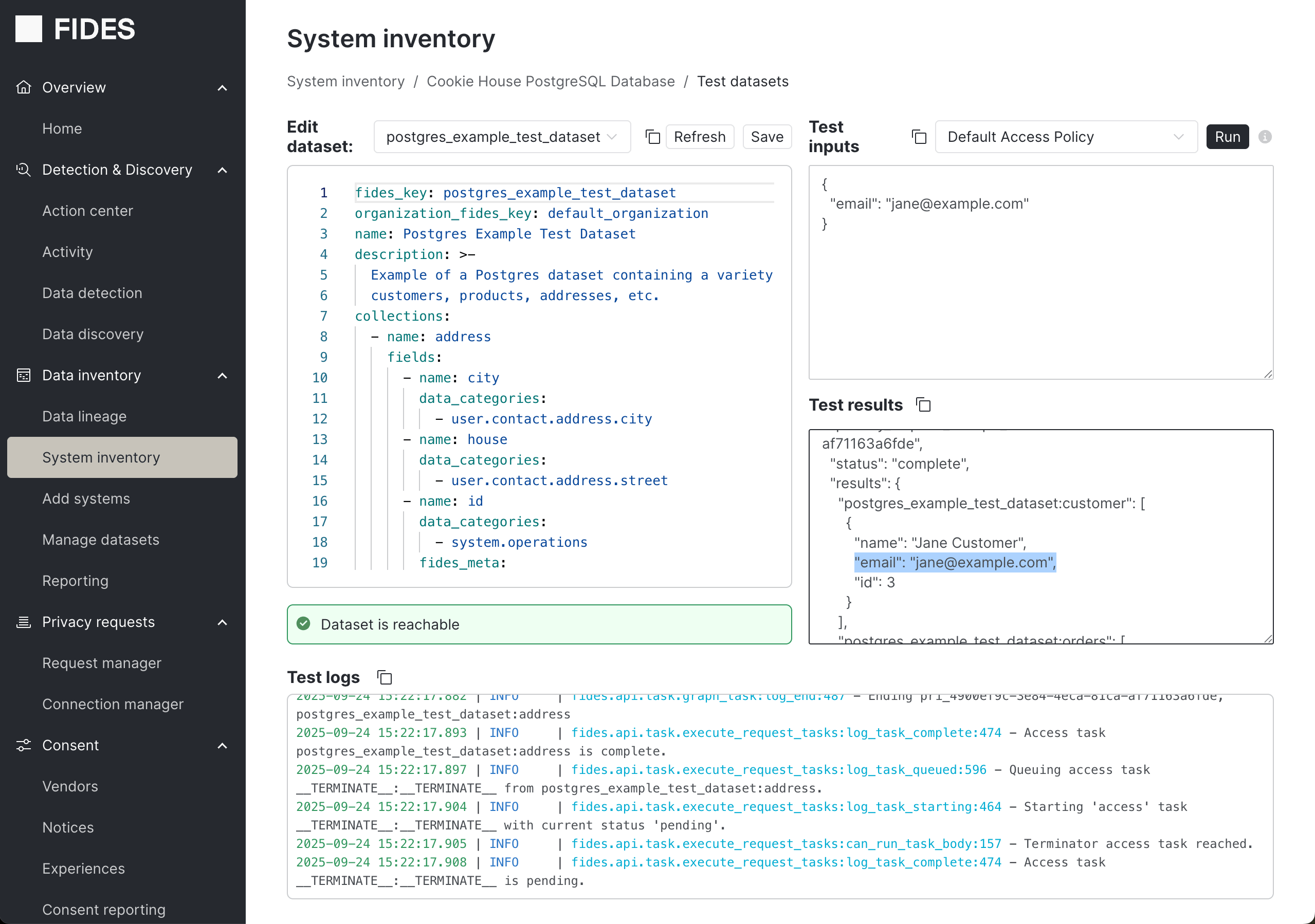
If an identity is provided which does not have a record in the database, there is no value returned for this node:
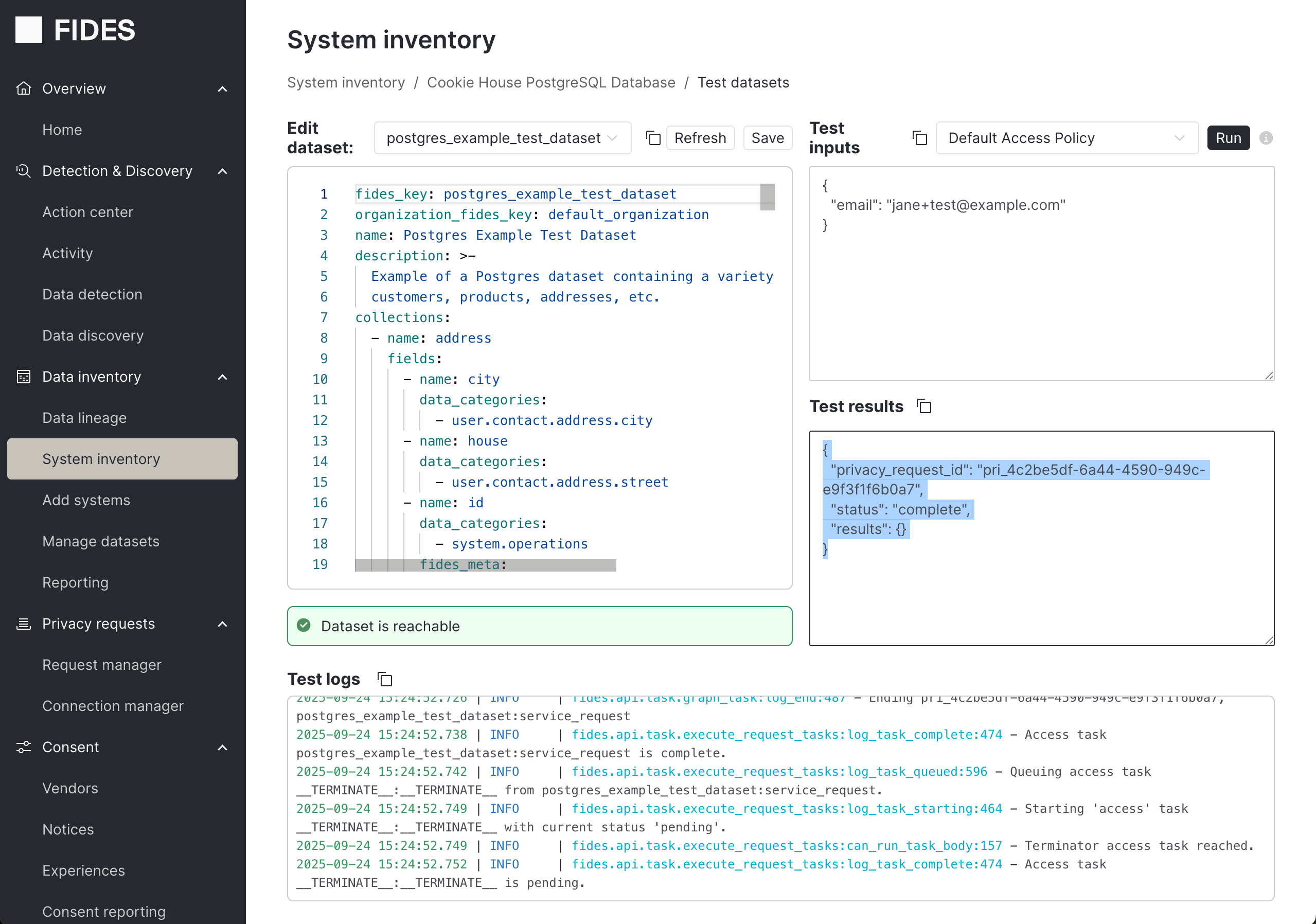
These two examples demonstrate how the exists condition is checked. As you can see in the second example, no value is returned, so the exists condition would not be satisfied and the manual task would NOT be created for jane+test@example.com.
For more information about how Fides constructs the privacy request graph and executes privacy requests, read our other documentation: Privacy request execution and Privacy request graphs.
Only create tasks when retention period is over 45 days
Additional operators exist which can be used to create conditions. A hypothetical configuration example is described below:
In this example, we can imagine that customer records are stored for varying lengths of time in third party service. Internally a business tracks the retention period of data in this system and persists that retention period in a Mongo DB. Conditions can be created that will create a manual task for the third party only if the user record exists AND the retention period for the record is over 45 days.
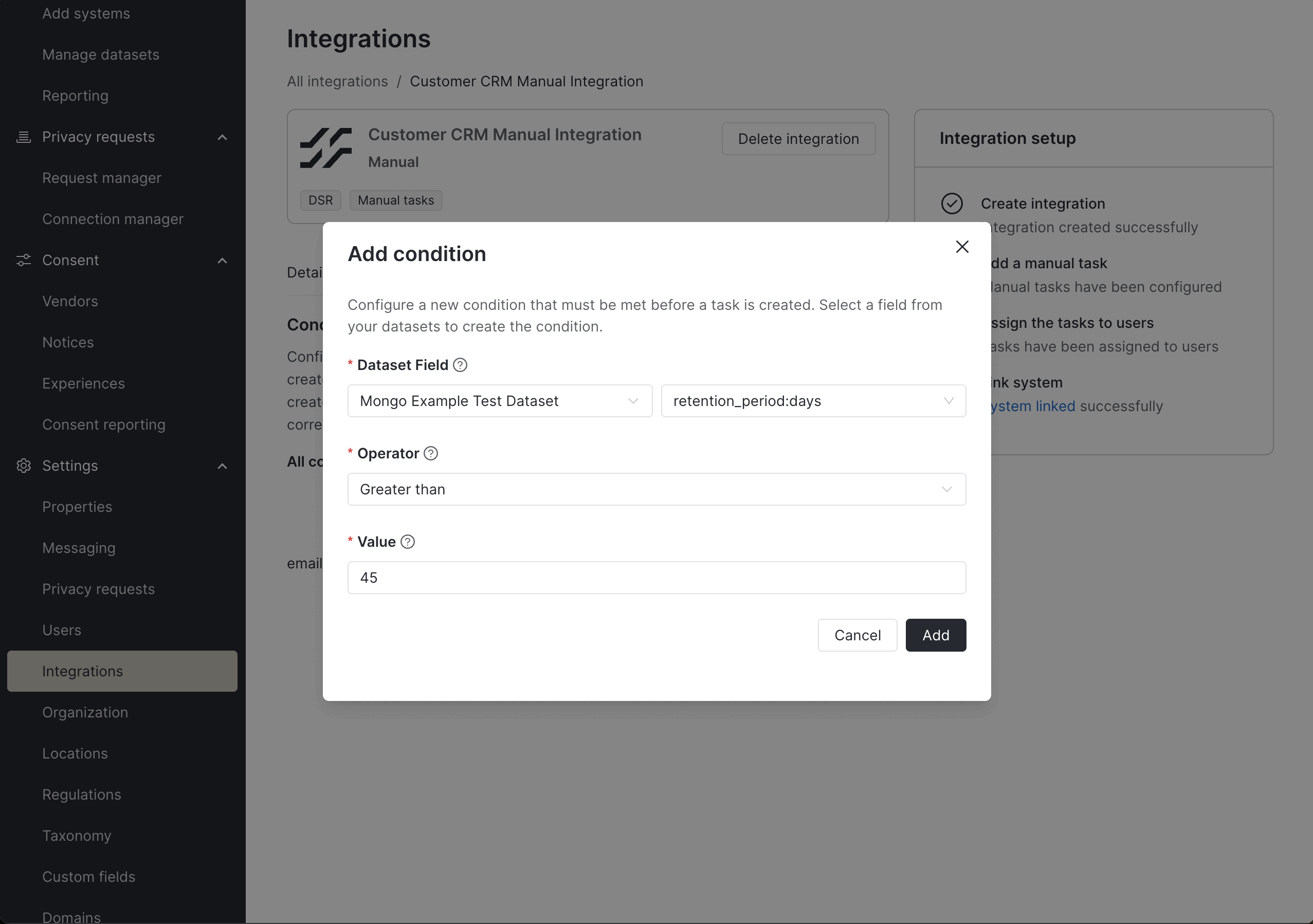
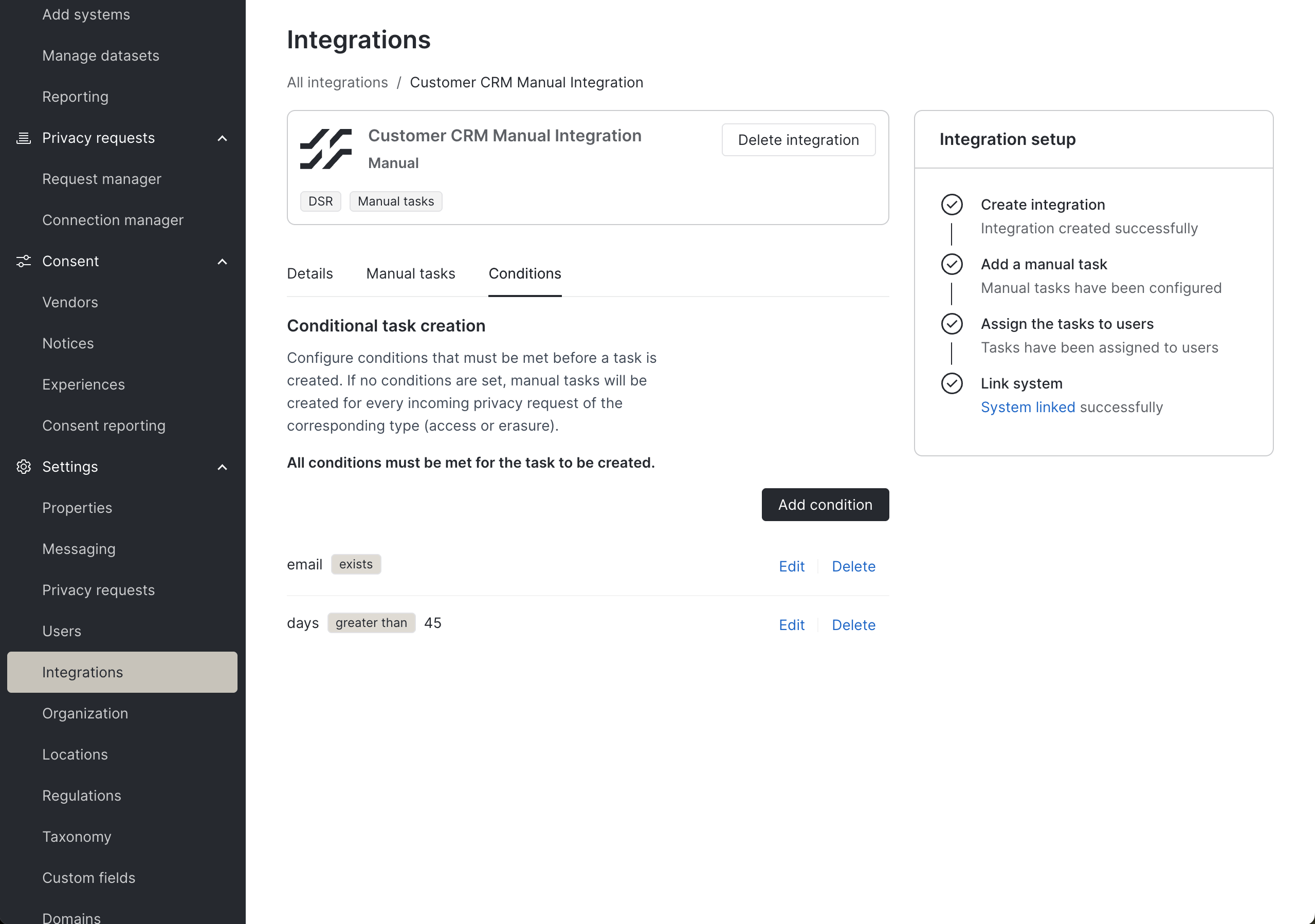
Conclusion
Manual task conditions are a powerful way to limit the manual tasks that are created for a privacy request. This guide has provided some examples of how to use conditions to create manual tasks for specific scenarios. For more information about how to configure manual tasks, read the manual task configuration guide.